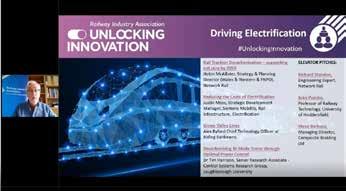28
SUSTAINABILITY & ENVIRONMENT
? n o o s g n i com DAVID SHIRRES
HydroFLEX, the UK’s first hydrogen train takes to the mainline on 30 September.
S N I A R T N E G HYDRO
I
f Britain’s transport is to stop using petroleum, electricity is the only alternative practical method of supplying vehicles with the huge amount of energy they use. In 2018, UK transport consumed 55.2 million tonnes of oil whilst the nation’s total electricity consumption (not just transportation) was equivalent to 30.1 million tonnes of oil. Electricity can also be produced from zero-carbon energy sources. Electric trains are the most efficient way of using electricity as these are the only vehicles that can be directly powered by it. Other vehicles need to store and carry electrical energy before they can use it. Although this is normally done by batteries, hydrogen trains can also store electrical energy. This is because hydrogen can
Rail Engineer | Issue 187 | November/December 2020
be produced by electrolysis, which uses electricity to split water into hydrogen and oxygen. A hydrogen train’s fuel cells can then use it to generate electricity, a process that effectively reverses the electrolysis, although storing electrical energy in this way is more complicated and less efficient than using batteries.
RSSB report T1145 “Options for traction energy decarbonisation in rail” includes a comment from Siemens that the efficiencies of various forms of traction from the original energy source to power at the wheels is: » overhead line electrification – 80% » battery traction – 65% » hydrogen – 25%. » diesel – 25%. However, hydrogen trains offer a far greater range than battery trains, as the energy density of hydrogen is twice that of a battery pack. If diesels are to be abolished, hydrogen is the only self-powered traction that can give a passenger train a range of a thousand kilometres per day. Yet, as the energy density of hydrogen is an eighth that of diesel fuel, and so the fuel storage tanks need to be eight times larger, it is not suitable for freight or high-powered/high-speed passenger trains.










